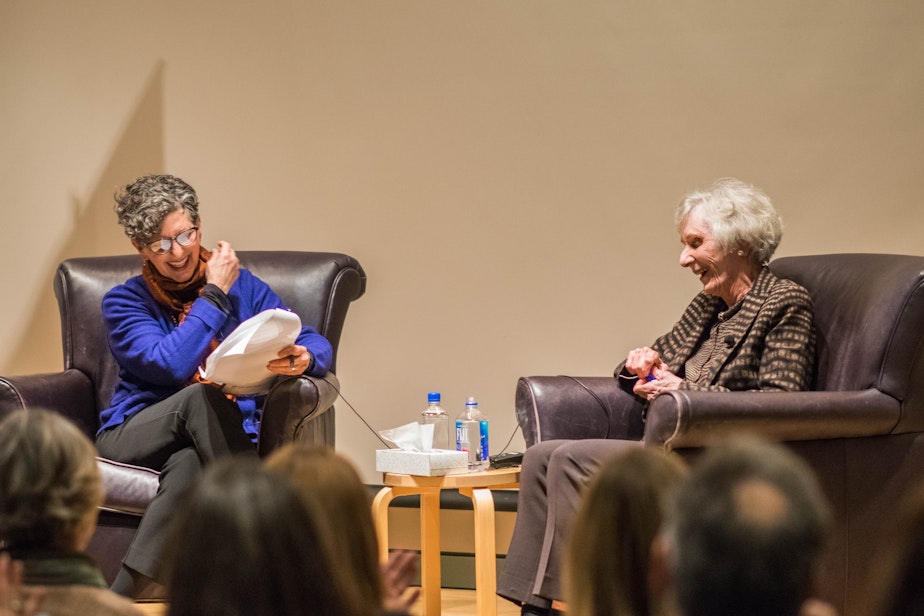Seattle arts patron Virginia Wright dies

The Seattle arts community lost one of its pillars this week.
Virginia Wright died Tuesday, February 18, surrounded by her family. She was 91 years old.
Over the past 60 years, Virginia and her late husband, Bagley, helped nurture the city’s major cultural institutions, but Virginia’s particular passion was the Seattle Art Museum.
Hear KUOW's Marcie Sillman interview Virginia Wright in 2016
Virginia was the daughter of Northwest timber baron Prentice Bloedel and his wife, Virginia. In a 2016 interview, she recalled that she loved to draw as a child, but didn’t pursue studio art as a vocation. Instead, she enrolled at New York’s Barnard University, where she studied art history. A professor introduced her to New York’s vibrant contemporary art scene; she never looked back, taking a job at the Sidney Janis gallery after graduation.
Wright met her husband Bagley, a Georgia-born journalist, in New York. They wed in 1952 and had four children together. When the Wrights moved back to Seattle from New York in 1955, they found a sleepy port city. Virginia Wright once referred to her hometown as a “cultural dustbin,” a condition the energetic young couple set about to remedy.
She recalled that, at that time, Seattle Art Museum owned work by the four best-known Northwest artists of the day: Mark Tobey, Guy Anderson, Morris Graves, and Kenneth Callahan. But Wright lamented SAM’s seeming indifference to the artists she and Bagley had come to love during their time in New York.
Virginia Wright’s transformative influence on Seattle
“By the late 1950s, we were really getting into buying contemporary art,” Wright recalled in 2016. “I don’t remember how it came about but I think Bagley and I both thought the museum would be the ultimate destination if we did build a collection.”
In the 1960s, the couple wanted to donate to SAM a large sculpture created by artist Frank Stella; Wright recalls that SAM director Richard Fuller “rolled his eyes and said ‘it’s so big!’”
By the 1962 World’s Fair, the Wrights and fellow art enthusiasts had come together to bring a major contemporary art exhibition to the fairgrounds. Wright said it was the first show of its kind in Seattle, and its success emboldened the organizers.
According to Wright, “we went to Dr. Fuller and said ‘if we raise the money every year, to import an exhibition, will you let us choose it?’ And he said yes!”
The Wrights eventually donated their significant collection to SAM; it includes many mid-20th century art stars: Mark Rothko, Barnett Newman, Agnes Martin. To celebrate the collection, in 2016 the museum mounted an exhibition called “Big Picture: Art After 1945.”
SAM isn’t the only lucky recipient of Virginia Wright’s love for the visual arts. In the 1970s, she set up the Virginia Wright Fund, which essentially bankrolled a significant outdoor sculpture collection at Western Washington University in Bellingham. Wright also shepherded Seattle’s 1976 acquisition of “Adjacent, Against, Upon,” the monumental stone sculpture sited at Myrtle Edwards Park on the Seattle waterfront.
Virginia and Bagley were active civic boosters throughout their lives. Bagley, a theater enthusiast, devoted time and money to Seattle Repertory Theatre, where the mainstage is named for him. He also is credited with helping to support construction of the Space Needle.
The couple also were supporters of the Seattle Symphony, Seattle Opera and other cultural institutions. Their son Charlie is currently serves on the Seattle Art Museum board of directors.




